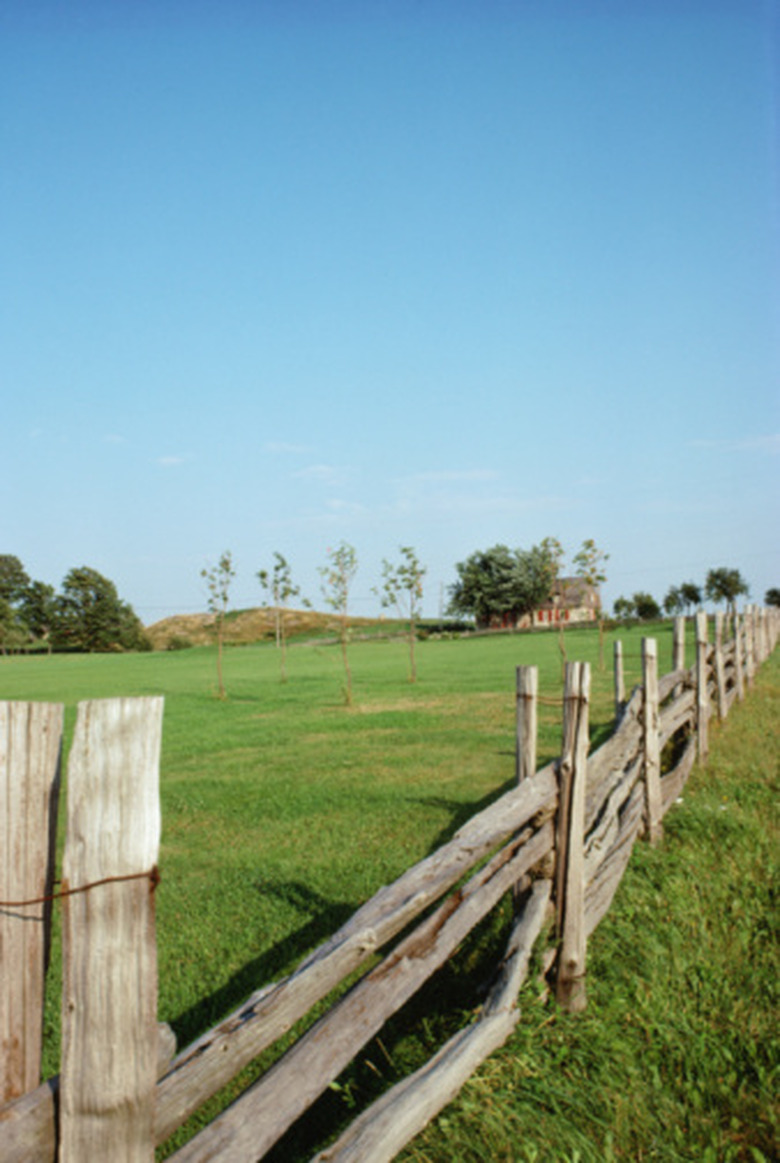Comparison Of Fir & Cedar Wood For A Wood Fence
Wood fences are exposed to both hot and cold weather, are regularly wet and come in contact with the ground. These conditions encourage decay and insect attack in most woods, making them unsuitable for fence use. The ideal fence wood is lightweight, easy to acquire and work with, and can survive adverse conditions for many years. Both cedar and fir wood are readily available, inexpensive materials for building fences, but they have very different properties.
Appearance
Appearance
Thuja occidentalis, or eastern white-cedar, is a pale wood ranging from white to straw brown, often with many knots. Eastern and western red cedars produce pale sapwood strongly defined from the heartwood, with dull red to reddish-brown heartwood. Fir species tend to have whitish to light brown lumber, with heartwood and sapwood that merge together indistinctly. Both types of lumber have straight, even grain. Red cedars are often preferred in fences due to their attractive color, which ages to silvery gray.
Durability
Durability
Both cedars and firs are softwood trees, with hardnesses ranging between 320 pounds-force on the Janka hardness scale and 490 pounds-force. On average, cedars are slightly softer. However, cedar significantly outperforms fir in its resistance to decay and wet conditions. Even in contact with wet ground, cedar species take a long time to rot. Seasoned wood of both tree types is susceptible to insect attack. Fir softwood can be used in fences after treatment with preservative chemicals, but the heartwood tends to resist impregnation.
Strength
Strength
Fir has a medium bending strength and is weak to crushing force. Its soft surface makes it susceptible to denting. Cedar species vary in their bending strength, but are weaker than fir on average. Most cedars are also weak against crushing, but eastern red cedar withstands crushing fairly well, and is stronger than fir. Cedar fences under significant load may suffer from splits and cracks.
Working Properties
Working Properties
Both fir and cedar wood are easy to cut and shape into fence posts, planks and other components. They bore well, taking holes without splitting or cracking. However, eastern white-cedar holds nails and screws poorly, especially compared to fir species. Use this wood for split rail fences and other styles where fasteners are not important. For nailed cedar fences, use western red cedar or fir.
